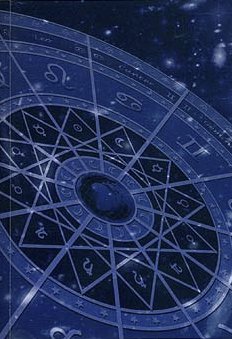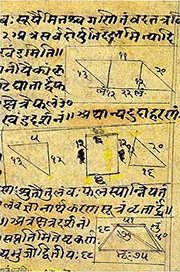Ghanamula, Ghanamūla, Ghana-mula: 12 definitions
Introduction:
Ghanamula means something in Hinduism, Sanskrit, Marathi. If you want to know the exact meaning, history, etymology or English translation of this term then check out the descriptions on this page. Add your comment or reference to a book if you want to contribute to this summary article.
In Hinduism
Ayurveda (science of life)
Nighantu (Synonyms and Characteristics of Drugs and technical terms)
Source: WorldCat: Rāj nighaṇṭuGhanamūla (घनमूल) is another name for Moraṭā, an unidentified medicinal plant, according to verse 3.92-93 of the 13th-century Raj Nighantu or Rājanighaṇṭu. Moraṭa is identified variously as either a) the root of the sugercane (Ikṣumūla), b) Aṅkolapuṣpā (Alangium lamarckii), c) Hastikarṇa-Palāśā or as a synonym of Mūrvā (both identified as Leea macrophylla), d) Maerua arenaria, e) Moīhar (Maerua arenaria). The third chapter (guḍūcyādi-varga) of this book contains climbers and creepers (vīrudh). Together with the names Ghanamūla and Moraṭā, there are a total of eight Sanskrit synonyms identified for this plant.

Āyurveda (आयुर्वेद, ayurveda) is a branch of Indian science dealing with medicine, herbalism, taxology, anatomy, surgery, alchemy and related topics. Traditional practice of Āyurveda in ancient India dates back to at least the first millenium BC. Literature is commonly written in Sanskrit using various poetic metres.
Jyotisha (astronomy and astrology)
Source: Indian National Science Academy: Annual Report 2015-16 (astronomy)Ghanamūla (घनमूल) refers to “cube root”, as explained in the Kriyākramakarī: a [16th-century] Sanskrit work on mathematics written by Śaṅkara and Nārāyaṇa.

Jyotisha (ज्योतिष, jyotiṣa or jyotish) refers to ‘astronomy’ or “Vedic astrology” and represents the fifth of the six Vedangas (additional sciences to be studied along with the Vedas). Jyotisha concerns itself with the study and prediction of the movements of celestial bodies, in order to calculate the auspicious time for rituals and ceremonies.
Ganitashastra (Mathematics and Algebra)
Source: archive.org: Hindu MathematicsGhanamūla (घनमूल) or “cube-root” refers to one of the twenty operations (logistics) of pāṭīgaṇita (“science of calculation which requires the use of writing material—the board”), according to Pṛthudakasvāmī’s commentary on the Brāhmasphuṭasiddhānta by Brahmagupta, a Sanskrit treatise on ancient Indian mathematics (gaṇita-śāstra) and astronomy from the 7th century.—The Hindu terms for the cube- root are ghanamūla, ghanapada.
Āryabhaṭa I in the Āryabhaṭīya: “Divide the second aghana place by thrice the square of the cube-root (ghanamūla); subtract from the first aghana place the square of the quotient multiplied by thrice the preceding (cube-root); and (subtract) the cube (of the quotient) from the ghana place; (the quotient put down at the next place (in the line of the root) gives the root)”
[Commentary:—“The units place is ghana, the tens place is first aghana, the hundreds place is second aghana, the thousands place is ghana, the ten-thousands place is first aghana and so on. After marking the places as ghana, first aghana and second aghana, the process begins with the subtraction of the greatest cube number from the figures up to the last ghana place. Though this has not been explicitly mentioned in the rule, the commentators say that it is implied in the expression “ghanasya mūla vargeṇa” etc. (‘by the square of the cube-root’ etc.)”]
Brahmagupta in the Brāhmasphuṭasiddhānta: “The divisor for the second aghana place is thrice the square of the cube-root(ghanamūla); the square of the quotient multiplied by three and the preceding (root) must be subtracted from the next (aghana place to the right), and the cube (of the quotient) from the ghana place; (the procedure repeated gives) the root”.
Śrīdhara in the Triśatikā: “(Divide the digits beginning with the units place into periods of) one ghana place and two aghana places. From the (last) ghana digit subtract the (greatest possible) cube; then taking down the remainder and the third pada (i.e., the second aghana digit) divide it by thrice the square of the cube-root which has been permanently placed in a separate place; place the quotient in the line; subtract the square of this (quotient) multiplied by thrice the last root from the next (aghana) digit. Then as before subtract the cube (of the quotient) from its own place (i.e., the ghana digit). Then take down again the third pada (i.e., second aghana digit), and the rest of the process is as before. (This will give) the root”.
Āryabhaṭa II (950) in the Mahāsiddhānta: “Ghana (i.e., the place from which cube is subtracted), bhājya (i.e., the ‘dividend’ place) and śodhya (i.e., the ‘minuend’ place) are the denominations (of the places). Subtract the (greatest) cube from its own place (i.e., from the numbers up to the last ghana digit); bring down the bhājya digit and divide it 3 by thrice the square of the cube-root which has been permanently placed. Place the quotient in the line (of the root). The square of this (quotient) multiplied by thrice the previous root is subtracted from its own place (i.e., the śodhya place) and its cube from the ghana place. If the above operations be possible then this (i.e., the number in the line) is the root so far. Then bringing down the bhājya digit continue the process as before (till it ends)”.

Ganitashastra (शिल्पशास्त्र, gaṇitaśāstra) refers to the ancient Indian science of mathematics, algebra, number theory, arithmetic, etc. Closely allied with astronomy, both were commonly taught and studied in universities, even since the 1st millennium BCE. Ganita-shastra also includes ritualistic math-books such as the Shulba-sutras.
Languages of India and abroad
Marathi-English dictionary
Source: DDSA: The Aryabhusan school dictionary, Marathi-Englishghanamūla (घनमूल) [-ḷa, -ळ].—n The cube-root.
Marathi is an Indo-European language having over 70 million native speakers people in (predominantly) Maharashtra India. Marathi, like many other Indo-Aryan languages, evolved from early forms of Prakrit, which itself is a subset of Sanskrit, one of the most ancient languages of the world.
Sanskrit dictionary
Source: Cologne Digital Sanskrit Dictionaries: Shabda-Sagara Sanskrit-English DictionaryGhanamūla (घनमूल).—n.
(-laṃ) Cube root, (in Arithmetic.) E. ghana and mūla root. ghanasya samatrighātasya mūlamādyam .
Source: Cologne Digital Sanskrit Dictionaries: Monier-Williams Sanskrit-English Dictionary1) Ghanamūla (घनमूल):—[=ghana-mūla] [from ghana] m. ‘thick-rooted’, the plant Moraṭa, [cf. Lexicographers, esp. such as amarasiṃha, halāyudha, hemacandra, etc.]
2) [v.s. ...] n. (in [arithmetic]) cube root.
Source: Cologne Digital Sanskrit Dictionaries: Yates Sanskrit-English DictionaryGhanamūla (घनमूल):—[ghana-mūla] (laṃ) 1. n. Cube root.
Source: DDSA: The practical Sanskrit-English dictionaryGhanamūla (घनमूल)—cube root (in math.)
[Sanskrit to German]
Sanskrit, also spelled संस्कृतम् (saṃskṛtam), is an ancient language of India commonly seen as the grandmother of the Indo-European language family (even English!). Closely allied with Prakrit and Pali, Sanskrit is more exhaustive in both grammar and terms and has the most extensive collection of literature in the world, greatly surpassing its sister-languages Greek and Latin.
Kannada-English dictionary
Source: Alar: Kannada-English corpusGhanamūla (ಘನಮೂಲ):—[noun] (math.) a quantity or number of which a given number or quantity is the cube (as three of twenty-seven); cube-root.
Kannada is a Dravidian language (as opposed to the Indo-European language family) mainly spoken in the southwestern region of India.
Nepali dictionary
Source: unoes: Nepali-English DictionaryGhanamūla (घनमूल):—n. Math. cube root;
Nepali is the primary language of the Nepalese people counting almost 20 million native speakers. The country of Nepal is situated in the Himalaya mountain range to the north of India.
See also (Relevant definitions)
Full-text: Ghanapada, Sodhya, Morata, Patiganita.
Relevant text
No search results for Ghanamula, Ghanamūla, Ghana-mula, Ghana-mūla; (plurals include: Ghanamulas, Ghanamūlas, mulas, mūlas) in any book or story.